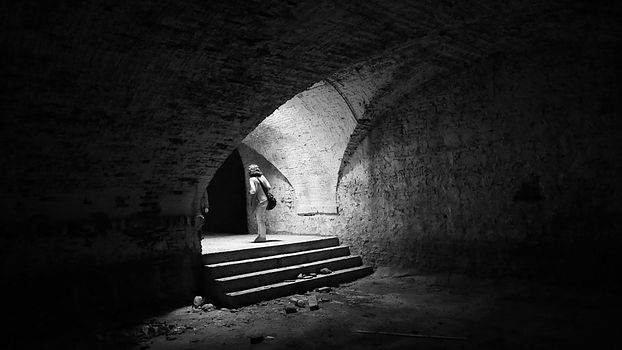Abandoned Buildings_Strategies for the Restoration of Abandoned Places
In this course, architects and scholars investigate the main issues connected with the restoration of buildings, abandoned urban areas and historic centres through new paradigms emerging from the ongoing global crisis, which link the meaning of living to an unprecedented synergy with the local landscape and local communities.

Professional refresher course | 4 Professional Training Credits (CFP)
Conference room “Casette Cinquecentesche del Cassero Senese”
Via Aurelio Saffi, 6 – Grosseto
Saturday, 12 November 2016 – 9:00 a.m.-1:30 p.m.
The course
The Permanent School of Living and the Department of Architecture of Pescara present the convention “Abandoned Buildings_Strategies for the Restoration of Abandoned Places” with the participation and collaboration of the Crocevia Foundation, Legambiente, the Order of Architects, Urban Planners, Landscape Architects and Heritage Preservers of the Province of Grosseto and thanks to the contribution of Conad Grosseto.
Training objectives
Cities are places where not only opportunities – culture, work, social life, health, education –, but also major environmental and social problems, such as energy consumption, CO2 emissions, private car traffic, poor public transport and conflict with nature, are concentrated. In this sense, the opportunity to restore abandoned places, spaces, buildings and areas, while waiting to restore them to a usable condition, encourages reflection on the system involving relationships, economy, work and mobility that goes beyond administrative boundaries and thus leading to new configurations and combinations. In addition, cities compete with each other not only economically, but also as regards the supply of services and the quality of life of their inhabitants.
In particular, in Italy, urban and architectural projects involve heavy responsibilities due to the widespread issues and the importance attached to the identity and the heritage value of cities and landscapes. How can the new environmental, climatic, social and economic needs linked with cultural heritage in abandoned places be met, given that such areas are often considered as ‘untouchable’?
In this sense, Grosseto served as a valuable test bench given the recent inter-university workshop “Reinhabiting heritage – a project for Grosseto”. To “reinhabit heritage” means to “reinhabit the city”: to try to give a new meaning to living, by re-using abandoned buildings and renovating them so as to adopt them to the new needs of the citizens; to adopt abandoned buildings to the citizens’ dreams and hopes, to make new utopias and past wishes, including unconscious wishes, come true. It means to give a new future-oriented meaning to our actions as designers: where cultural heritage is incomplete, the project should be an opportunity to create new recognizability and new references; to update the space where we have been, because we keep memories in space and space is open to change and shared transformation. The participatory process (started by this workshop) helps designers make informed choices when it comes to restoration works, by encouraging them to listen to people and the citizens, to share ideas with them and to get closer to them. For this reason, the project proposed by the students of the Universities of Pescara and Florence will be presented in addition to other reports.
Speakers:
Edoardo Milesi – Architect and Director of the Permanent School of Living
Paolo Riani – Architect from the Department of Energy, Systems, Territory and Construction Engineering of the University of Pisa
Paola Misino – Adjunct Lecturer at the University G. D’Annunzio of Pescara
Michele Manigrasso – PhD from the University G. D’Annunzio of Pescara
Angelo Gentili – Coordinator of Festambiente-net – National Secretariat of Legambiente.